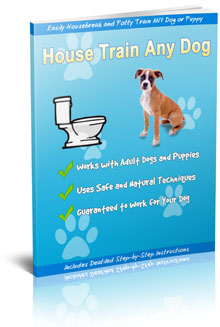Simple Steps to Effectively Housetrain & Potty Train Your Dog
Are you struggling to housetrain and potty train your furry friend? Don’t worry; you’re not alone. Teaching your dog proper bathroom manners can be a challenging task, but with the right techniques and consistency, you can help your pup learn where and when to go. In this article, we’ll explore some simple and effective strategies to help you housetrain and potty train any dog successfully.
The Benefits of Proper Housetraining and Potty Training
Proper housetraining and potty training are essential for both you and your dog. Not only does it prevent accidents and keep your home clean, but it also fosters good behavior and strengthens the bond between you and your furry companion. By teaching your dog where and when to go potty, you’re setting them up for a lifetime of good habits and a happier, healthier life.
Effective Strategies for Housetraining & Potty Training
1. Establish a Routine: Dogs thrive on routine, so it’s essential to establish a consistent schedule for feeding, potty breaks, and playtime. Take your dog outside first thing in the morning, after meals, and before bedtime to reinforce good potty habits.
2. Use Positive Reinforcement: Reward your dog with treats, praise, and affection when they go potty in the designated area. Positive reinforcement helps your dog associate peeing and pooping outside with good feelings, making them more likely to repeat the behavior.
3. Supervise Your Dog: Keep a close eye on your furry friend, especially during the housetraining phase. Supervision allows you to catch accidents before they happen and redirect your dog to the appropriate potty spot.
4. Clean Up Accidents Promptly: If your dog has an accident indoors, clean it up thoroughly to remove any lingering scent that may attract them to the same spot again. Use an enzymatic cleaner to eliminate odors and discourage repeat offences.
Frequently Asked Questions About Housetraining & Potty Training
Q: How long does it take to housetrain a dog?
A: The time it takes to housetrain a dog varies depending on the breed, age, and consistency of training. Some dogs may pick up housetraining in a few weeks, while others may take several months to fully grasp the concept.
Q: My dog keeps having accidents in the house. What should I do?
A: If your dog continues to have accidents indoors, revisit your housetraining routine and ensure you’re providing enough opportunities for them to go outside. Consistency is key, so stick to a strict schedule and reward good behavior.
Q: Should I punish my dog for having accidents inside?
A: No, punishing your dog for accidents can create fear and confusion. Instead of scolding them for mistakes, focus on positive reinforcement and redirecting your dog to the correct potty spot.
Q: Can older dogs be housetrained?
A: Yes, older dogs can be housetrained with patience and consistency. While it may take longer for older dogs to learn new habits, it’s entirely possible to housetrain them successfully with the right approach.
Q: Is there a book I can refer to for more housetraining tips?
A: Yes, there is an excellent resource called the “How To Housetrain & Potty Train Any Dog” book that provides comprehensive guidance on effectively housetraining and potty training your furry companion.
In Conclusion
Housetraining and potty training your dog may require time and effort, but the benefits far outweigh the challenges. By establishing a routine, using positive reinforcement, and maintaining consistency, you can help your dog learn where and when to go potty successfully. Remember, patience is key, and with the right techniques and dedication, you can achieve housetraining success with any dog.


